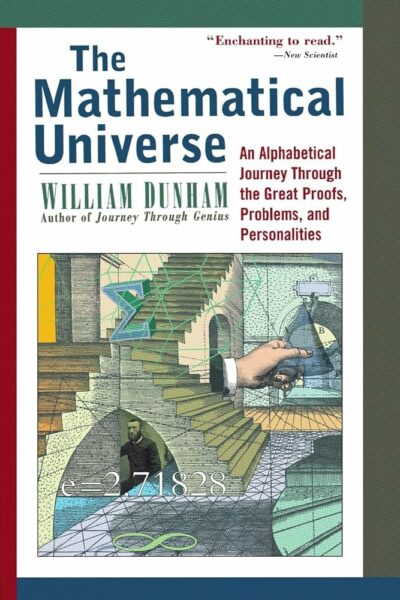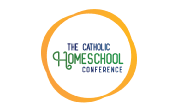To Math Through Literature
Math can be a tricky subject in homeschooling. I remember my eldest daughter struggled terribly with math. She isn’t a “left-brained” kid. Therefore, math isn’t intuitive for her. Nothing we did seemed to help. No matter what textbook we used, the instructions always felt too vague. The concepts often went beyond my level of mathematical knowledge. Consequently, this made it difficult for me to help. Every assignment was a slog, with exercises sometimes taking an hour. My daughter became so stressed that we decided to let her take the rest of the semester off from the dreaded numbers.
When I think back to those early days of homeschooling math, I wish I had known about the literary approach to mathematics! Most of us don’t think about literature when we think about math, In fact, those subjects feel poles apart. Literature can be a welcoming gateway into the world of mathematics. Fortunately, it provides a “backdoor” into the subject for students who struggle with numbers, providing a more conceptual approach.
To Math Through Living Literature
If you are like me, math makes you think of a bunch of equations against a white page in a thick math book, like most of us used in high school. We usually think of math education in terms of solving problems and working through equations.
While this is certainly an integral part of math, we forget that the ability to work through problems presupposes a more fundamental skill. That is the ability to understand quantitative concepts. For example, take a simple math problem like 2 + 2 = 4. In order for a student to solve this problem, they must understand the concept of addition. That is, the relation between quantities when they are added together. Only when this concept is understood can the student understand an equation and solve it.
When I was in third grade, before our teacher could teach us to solve multiplication problems, she had to get us to understand what multiplication meant conceptually. She did this by having us use dried beans to “count by sets,” which was how we were introduced to the concept of multiplying. Once we grasped the concept, we could work through the equations more easily.
Some children stuggle with grasping these mathematical concepts. And to be honest, some math texts do not explain them very well. This is where literature can come in handy. Whereas some children struggle with quantitative concepts in a mathematical context, they can grasp them through a literary context. This is especially true for children who are considered more “right-brained”: creative, artistic students who struggle with the logical calculations of math.
Samples of Helpful Books
Books that explain mathematical concepts through literature can be a fantastic resource for helping these students understand the ideas upon which every math equation is based. More books than you can imagine are available in this genre. Here are just a few you can check out (with more resources at the end).
Math Trek by Ivars Peterson and Nancy Henderson
 Math Trek: Adventures in Math Zone (1999) introduces mathematical concepts through the example of an amusement park called the Math Zone. Every amusement park section is dedicated to a different mathematical concept and contains workable puzzles and thought experiments illustrating the ideas. (With solutions provided at the end.) The book targets grades 5-9 and covers an astonishing breadth of material in an age-appropriate manner. The book focuses more on concepts such as knots, Mobius strips, fractals, chaos theory, probability, binary ciphers, and ellipses than on numbers.
Math Trek: Adventures in Math Zone (1999) introduces mathematical concepts through the example of an amusement park called the Math Zone. Every amusement park section is dedicated to a different mathematical concept and contains workable puzzles and thought experiments illustrating the ideas. (With solutions provided at the end.) The book targets grades 5-9 and covers an astonishing breadth of material in an age-appropriate manner. The book focuses more on concepts such as knots, Mobius strips, fractals, chaos theory, probability, binary ciphers, and ellipses than on numbers.
Math for Smarty Pants by Marilyn Burns
 Marilyn Burns’ classic 1982 book Math for Smarty Pants: A Brown Paper School Book is a book for the numbers-averse. It introduces basic math concepts through puzzles, tricks, and entertaining word problems. Math for Smarty Pants is neither a textbook nor a workbook but a book meant to inspire children with a love of math by teaching them to think mathematically. It is written for elementary, but has been used with kids as young as 5 up to 6th and 7th graders. Even adults can benefit by using it to refresh their knowledge of fundamental concepts. Still going strong after forty-plus years, Math for Smarty Pants is a book that stands the test of time.
Marilyn Burns’ classic 1982 book Math for Smarty Pants: A Brown Paper School Book is a book for the numbers-averse. It introduces basic math concepts through puzzles, tricks, and entertaining word problems. Math for Smarty Pants is neither a textbook nor a workbook but a book meant to inspire children with a love of math by teaching them to think mathematically. It is written for elementary, but has been used with kids as young as 5 up to 6th and 7th graders. Even adults can benefit by using it to refresh their knowledge of fundamental concepts. Still going strong after forty-plus years, Math for Smarty Pants is a book that stands the test of time.
Mathematical Apocrypha by Steven Krantz
Mathematical Apocrypha: Stories and Anecdotes of Mathematicians and the Mathematical by Steven Kranz (2002) takes a biographical approach to math by presenting us with a collection of essays about the lives and ideas of famous mathematicians. Enriched with many illustrations and amusing anecdotes, Mathematical Apocrypha provides what might be called an “incarnational” approach to math. It pulls back the curtain on mathematical culture and shows how math was worked and lived by some of its most notable proponents.
Math Curse by Jan Scieszka and Lane Smith
Jan Scieszka and Lane Smith’s Math Curse (1995) takes a creative approach to math by encouraging readers to think mathematically about the world. This concept is the titular “math curse.” The narrator is “afflicted” with the “curse,” unable to stop finding mathematical applications in everyday occurrences. Demonstrating math’s universal applicability, the story shows its relevance in activities ranging from measuring in the kitchen to studying geography. Engaging with over-the-top, collage-style art and witty writing, Math Curse is an excellent book for late elementary and early middle schoolers who want to understand how math is relevant.
The Mathematical Universe by William Dunham
The Mathematical Universe: An Alphabetical Journey through the Great Proofs, Problems, and Personalities by William Dunham (1997) is a collection of essays on various mathematical topics arranged alphabetically. While writing for the non-mathematical reader, Dunham maintains a surprisingly easy and conversational tone despite tackling complex ideas like Russell’s Paradox and isoperimetric inequalities. Each concept uses examples geared toward beginners. The text also includes biographical information about famous mathematicians. Using an alphabetic arrangement gives the book the feel of an encyclopedia rather than a single cohesive narrative. However, it is still an excellent way to introduce readers of all ages to mathematical concepts. Although it spans 320 pages, this book suits older children best.
Additional Resources
These are just a few examples, but there are lots more! Maureen Wittmann’s For the Love of Literature offers many additional living math literature titles from preschool to adult. Alternately, you can click on the links to any one of these books above, scroll down to the bottom of the listing, and you will see Amazon’s recommendations for other books in a similar style.
Homeschool Connections offers a variety of out-of-the-box math courses online designed to get kids excited about math in real life, including:
- Gamified Math Series
- Discovering The WOW Factor in Math (Math Appreciation)
- Numbers Party
- Financial Algebra
If your child struggles with numbers, try introducing them to mathematics through the backdoor of living literature. You may be surprised how much more they enjoy those numbers after they build a solid grasp of how it all fits together.
What are your thoughts on this topic? Join me and other homeschooling parents at our Homeschool Connections Community or our Facebook group to continue the discussion!
NOTE: This article contains affiliate links.









